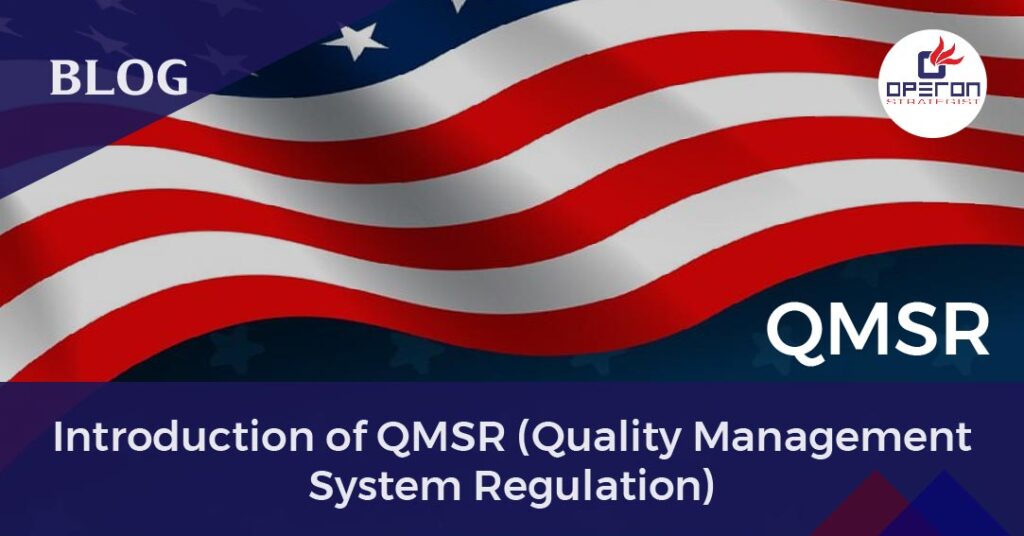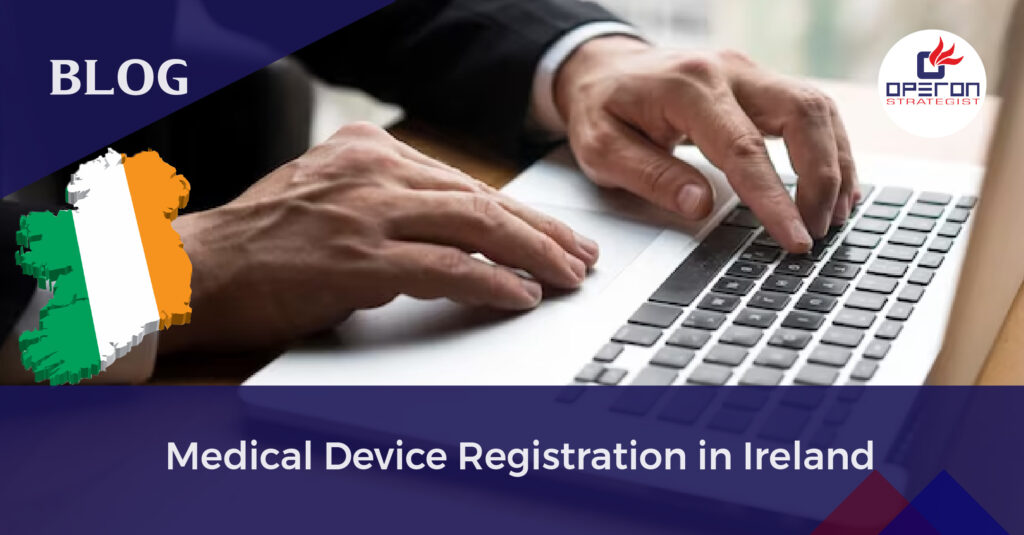This blog discusses the harmonization of FDA QSR with ISO 13485. Those new to the industry are likely to have a lot of questions, such as, “How do we get started?” Which regulations should be followed? What is QSMR?
ISO13485 is an international quality management system regulation, although the United States has its own set of regulations called the FDA QSR (21CFR PART 820). This means that companies wishing to sell their products in Europe, Australia, and other markets must adhere to the ISO 13485 standard, while Brazil and Japan have their own criteria. Companies wishing to sell their products in the United States must adhere to FDA requirements.
Overview of QMSR-(Quality Management System Regulation)
Looking For a Medical Device Regulatory Consultant?
Let’s have a word about your next project
QMSR Explained: What FDA QSR and ISO 13485 Harmonization means for Medical Device Companies
After four years, the US Food and Drug Administration (FDA) announced plans to align its Quality System Regulation (QSR) with the worldwide standard ISO 13485:2016.
The FDA proposed a new QMSR on February 23, 2022. The proposed QMSR combines the FDA’s Quality System Regulation (QSR) regulations for current Good Manufacturing Practices (cGMP) with ISO 13485:2016, an international consensus standard for medical device quality management systems. According to the FDA’s study, the regulation as worded would result in cost savings of $439-533 million over ten years for medical device manufacturers that meet both standards.
Why Is FDA Proposing This Change?
To adjust to new regularity needs. The FDA is proposing One year following the publication of the final rule. The FDA is considering harmonizing its regulatory standards for medical device quality systems in 21 CFR part 820 with ISO 13485:2016 during the international standard’s three-year transition period.
Since spring 2018, the FDA has placed the QSR update as one of the anticipated regulatory frameworks on each of its biannual unified agendas. The timetable of the mammoth undertaking has shifted with each passing year, most recently in the 2021 unified agenda, when the proposed regulation was scheduled to be released in December 2021.
The FDA announced a proposed rule. The following procedures should be taken before it is finalized:
- The public advisory committee meeting of the Device Good Manufacturing Practice Advisory Committee on March 2, 2022.
- A 90-day public comment period and subsequent revisions by FDA
- One year between the finalization of the rule and its implementation.
Nonetheless, this is an important step toward harmonization, one that medical device professionals have long anticipated. So, let’s get straight to the point: why is the FDA harmonizing the rules, what are the new revisions, and how will this affect medical device manufacturers?
How Does the QMSR Differ From the QSR?
The FDA proposes adopting ISO 13485 “by reference,” which implies the new QMSR will address specific standards by highlighting their location in ISO 13485:2016. Of course, this will require considerable revisions to 21 CFR Part 820 as we know it. The FDA concurs by “proposing additional definitions, clarifying concepts, and additional requirements, all of which would require compliance within a manufacturer’s QMS in addition to ISO 13485.”
The best news is that many of these changes are essentially semantic and do not alter medical device firms’ basic QMS standards. For example, the term “device master record” is not used in ISO 13485, but the principle behind it is correctly addressed in ISO 13485’s requirement for a medical device file, according to the current proposal. The statistics provided on the FDA’s government website based on the rules and information listed below may be useful.
The proposed rule also includes several new sections in Part 820:
- Section 820.7 - Incorporation by reference
- Section 820.10 - Requirements for a quality management system
- Section 820.15 - Clarification of concepts
- Section 820.35 - Control of records.
- Section 820.45 - Device labeling and packaging controls
Terms that do not appear in ISO 13485 will be retained | |
Act | Will explain more precisely reflect the term |
Management with executive responsibility | This will explain that Senior employees of the manufacturer are responsible for making chances to the quality policy and ensuring the manufacturer follows the policy. |
Rework | The definition is retained with the removal of the term “device master record (DMR)” as the concept is adequately covered under the requirements for a medical device file under Clause 4.2.3 of ISO 13485. |
Process validation | FDA is retaining the definition while clarifying that the term is synonymous with “validation of processes” as used in ISO 13485. |
Customer | FDA is proposing to include the definition of this term, “as it is important to the interpretation of the proposed rule. FDA notes that it has not historically used the term but finds it useful to “encompass many types of individuals and organizations throughout the device manufacturing process, such as component manufacturers, contract manufacturers, and end users. FDA further explained that it expects manufacturers to comply with the customer property provisions in Clause 7.5.10 of ISO 13485 “to the extent necessary to assure the safety and effectiveness of the devices being manufactured.” However, FDA notes that it does not intend to enforce any customer property provisions that go beyond the safety and effectiveness of the devices being manufactured. |
Component | Retained without change |
Finished device | Retained without change |
Human cell, tissue, or cellular or tissue-based product (HCT/P) regulated as a device | Retained without change |
Design validation | Retained without change |
Remanufacturer | Retained without change |
Nonconformity | Retained without change |
Verification | Retained without change |
What Does the FDA QSR Transition to ISO 13485 Mean for Medical Device Manufacturers?
While this may appear to be a substantial change for medical device manufacturers, it’s worth remembering that the FDA already considers ISO 13485 to be quite similar to the current QSR. It’s good to keep an eye on this proposed rule and any revisions that emerge during the public comment period, but it won’t need a major redesign of your quality management system. This harmonization aims at improving everyone’s lives.
The proposed rule goes into detail concerning three concepts: “organization,” “safety and performance,” and “process validation.” A few significant items to consider about the proposed rule to align the FDA QSR with ISO 13485:2016:
- There will be a one-year waiting period after finalizing the rule
- The proposed rule would also result in the replacement of the current Quality System Inspection Technique (QSIT) with a new approach that is consistent with the new QMSR requirements.
- FDA is making the process smoother to harmonize the QSR with ISO13485:2016, which is the latest version of the ISO standard. Any future revision to ISO 13485 would first need to be evaluated by the FDA before being incorporated into the QMSR.
- QMSR will be harmonized with ISO 13485, does not mean that one will be issued an ISO 13485 certification of conformance after an inspection. And if you already are ISO 13485 certified, then also you will not get any exemption from the FDA Inspection process.
This is a proposed rule This is subject to change. To get more detail you can read up on how FDA views the relationship between the QSR And ISO 13485 . You can also check news About FDA-updated rules on our website.
Expert QMS Certification Services by Operon Strategist:
Operon Strategist provides comprehensive QMS certification services that include training, layout design, production, and post-market support. With regulatory knowledge from previous FDA, EU-notified authorities, QMS certification bodies, and Medical Devices Agencies, we excel at auditing, executing, and maintaining all areas of quality management systems. Trust Operon Strategist’s strong technical expertise to assist your organization through flawless certification processes and maintain continuing compliance. Contact us today to find out how we can efficiently serve your compliance needs.
- adminhttps://operonstrategist.com/author/admin-2/
- adminhttps://operonstrategist.com/author/admin-2/
- adminhttps://operonstrategist.com/author/admin-2/
- adminhttps://operonstrategist.com/author/admin-2/



